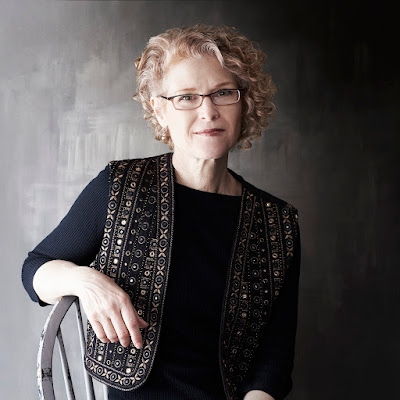When I have a client come to my studio for a business portrait session I always suggest they bring wardrobe options. We review the options, shooting test shots if necessary, and choose the outfit that works best. If it's the case that the client needs one great shot, we do the whole shoot in the one best wardrobe option. We don't shoot all the outfits, because we don't want to discover that the hands-down best expression happened in the wrong outfit. (Link below to a post written by a happy client of mine who mentioned this exact thing.)
Why am I bringing this up? Because this is not the way everyone works. And without an explanation my method might sound to some as if they aren't getting as much from a photographer like me as they are from one who advertises based on a quantity model. This what they want you to think.
Here's a short story about an author shoot for a publisher. We were shooting a book cover. There were three dresses to choose from. We could all see which dress looked best so we started with that. By the third dress, which even the author didn't really like, her energy level had dropped way down.
Keep in mind that this is someone who knew there was a lot at stake in terms of getting this book cover right, and was a pro at being in front of a camera.
We kept shooting, because the publisher wanted options. But we weren't actually getting any viable "options". The author was getting increasingly tired and disappointed. We weren't getting good shots. We spent a bunch of time and energy shooting a bunch of images that would never see the light of day, and by the end of the shoot our author's sunny disposition had evaporated.
It was the (not actual) "need" for quantity that compromised the experience for the subject, and set us all up for disappointment, even though we had successfully captured a winning shot!
In this digital age when it's so easy to offer quantity – we're no longer limited by the number of frames on a roll of film and the cost of buying it, processing it, etc. (although there are still costs with digital, which people don't acknowledge enough, but that's not for today's post) - it is so easy to use as a selling point the number of pictures a photographer will take or the client will get. "150 photos!" (or whatever). And it's easy to say that a client can change as many times as they want, and we'll change backgrounds and lighting as many times as we can in a given period, say, an hour. Of course there's always an option offered for those with a leaner budget who know they only want one "look"...but if you look at the detailed description it'll be for a very short, strictly time-limited session, usually something like 15 minutes.
What if I told you that it can take an hour to get one “best photo of me I've ever had!”? Does it make sense that you will get the value you want, and that you're being sold, if you change three times in that hour, or if you have 15 minutes to get from "I hate having my picture taken" to "wow, that was so much less painful that I thought it would be and I really love this photo!"?
I'm not saying don't shoot more than one outfit. I am explaining why I don't use a business model based on getting as many photos as you possibly can in a strictly limited period of time. I am suggesting that you consider what you really need and plan with your photographer accordingly. Especially for people who don't love being photographed, think about what you are setting yourself up for if it's all about shooting as much and as fast as possible.
Using the Goldilocks principle, the ideal would be to avoid the "too hot" option (big pile of less than stellar pics) or the "too cold" (short, fast, impersonal shoot). A "just right" shoot will be based on your particular needs, and will not compromise on quality.
The experience will affect the results. Care and attention to detail will affect the results. Set yourself up for success.
Link to Shari Graydon's LinkedIn post mentioned above:
https://www.linkedin.com/feed/update/urn:li:activity:7268692765838848000/
kathryn@hollinrake.com











